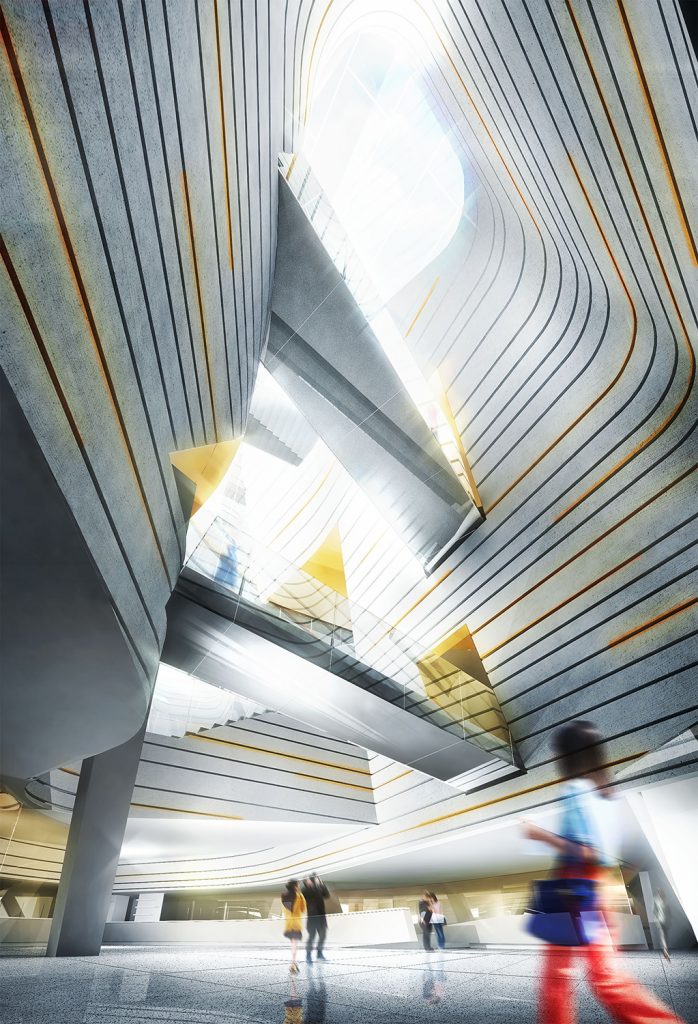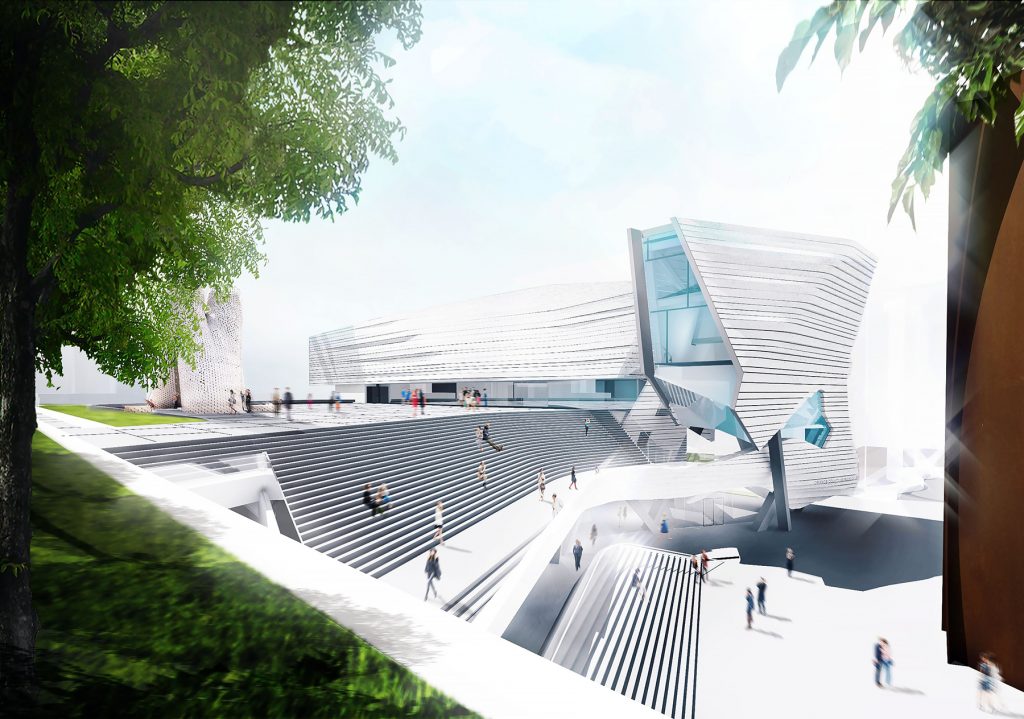
New renderings and models for the future Orange County Museum of Art complex at Segerstrom Center for the Arts were unveiled Thursday morning during a press conference in an office building overlooking Segerstrom Center and the new OCMA site.
During the press conference, Todd D. Smith, Director & CEO of OCMA, announced that the museum’s current site in Newport Center would close permanently on June 17, 2018. Temporary exhibitions and programs will be presented starting this fall at a gallery space in South Coast Plaza Village.
“We will break ground in 2019 and open to the public in 2021,” said Smith. “OCMA’s new home will expand on the legacy of community enrichment and dedication to presenting modern and contemporary art from southern California and the Pacific Rim.”
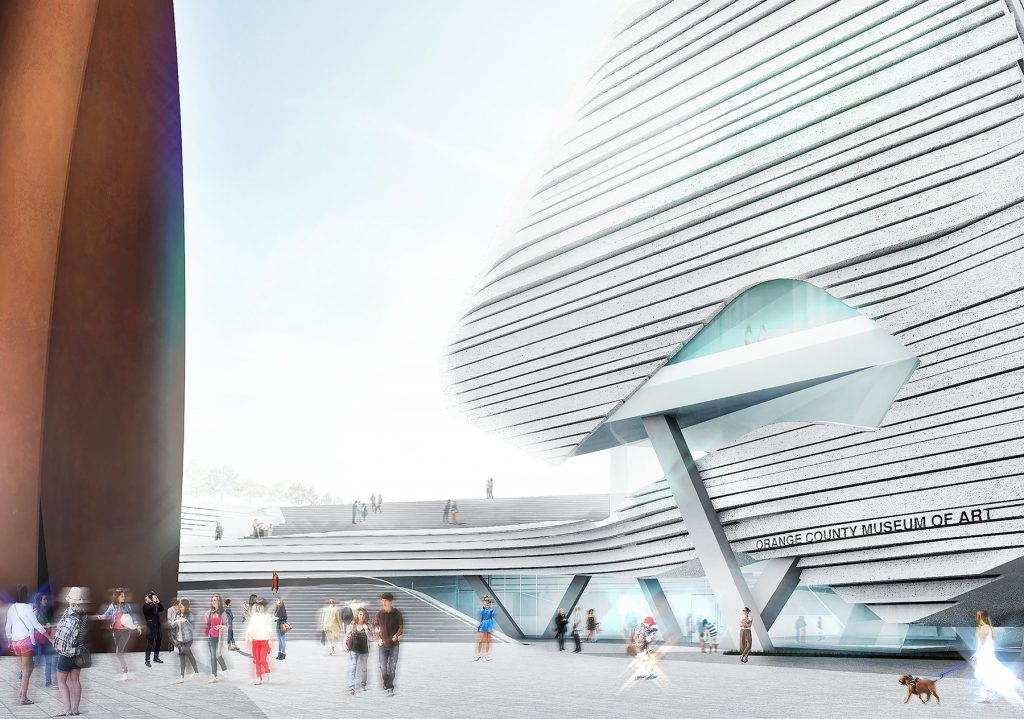
Smith noted that the new museum will have 25,000 feet of exhibition space – about 50 percent more than the current location – which will provide more room for the 3,500 objects in the museum’s permanent collection.
“This is a purpose-built museum which aligns with southern California’s heritage and a growing audience of museumgoers,” said Craig Wells, president of the OCMA Board of Trustees. “We would not be here today without the incredible dedication of OCMA’s board of trustees and their generous support for making this vision a reality. I am profoundly grateful to Anton Segerstrom for being a partner with us in this bold vision and for our future.”
Created by Morphosis, a global architecture firm, the new OCMA building includes space for education programs, performances, and public gatherings.
For more information on the OCMA project, including renderings and building details, visit OCMA.net and OCMA2021.org.
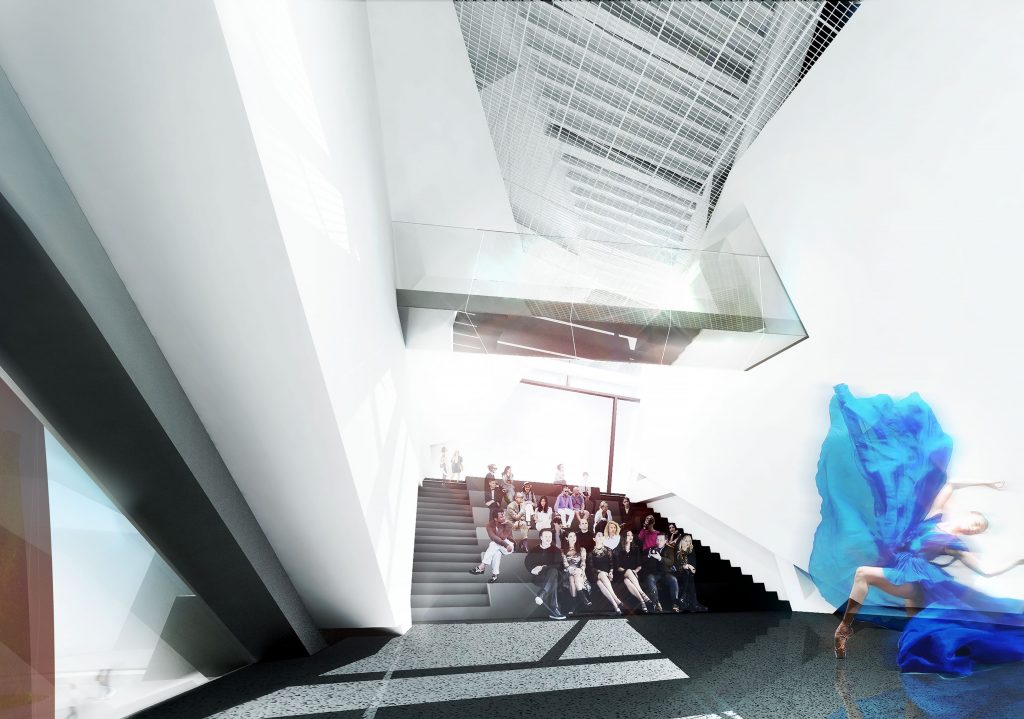
SIDEBARS (courtesy of OCMA):
Project Details
With flexible exhibition galleries, dedicated space for educational programming, and areas for public gathering, OCMA’S new building will provide expanded access to the museum’s permanent collection, which comprises important works of modern and contemporary art from Southern California and the Pacific Rim, and to its world-class special exhibition program.
The main floor is dedicated to reconfigurable open-span exhibition space, complemented by mezzanine and store-front galleries that can accommodate temporary and permanent collection exhibitions spanning a variety of scales and mediums.
The upper level includes administrative areas. A spacious roof terrace, equivalent in size to 70 percent of the building’s footprint, serves as an extension of the galleries with open-air spaces that can be configured for installations, a sculpture garden, outdoor film screenings, or events.
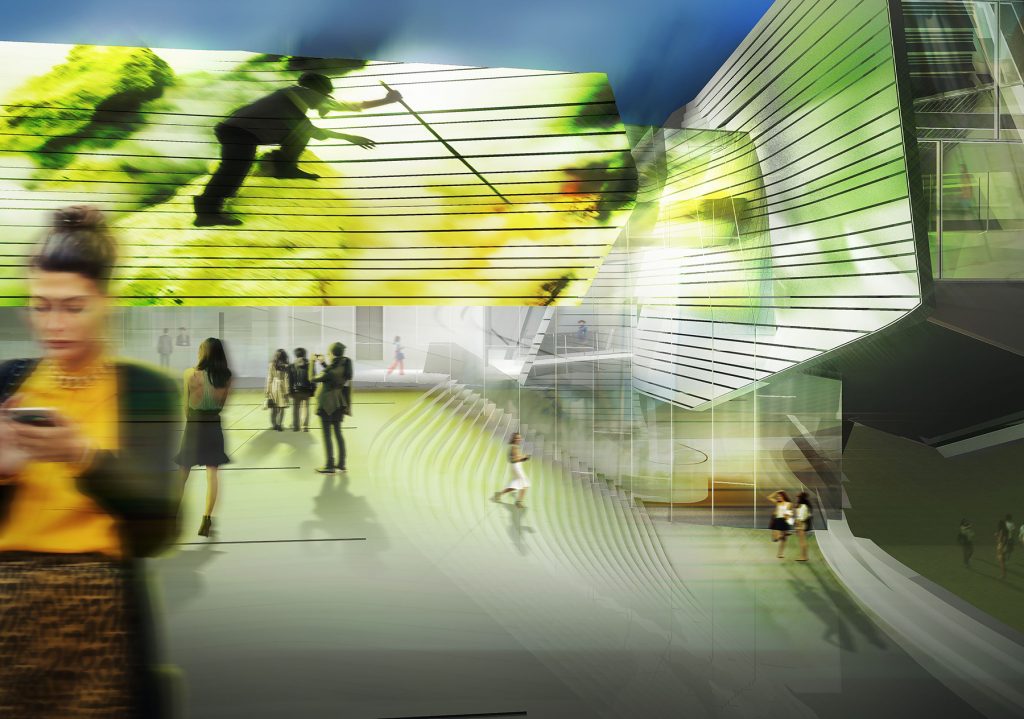
Hovering over the soaring, light-filled lobby atrium is dynamic architectural space for education activities and performance, illuminated by a full-height window overlooking the terrace.
A grand outdoor public stair curves toward the museum’s entry, creating dialogue with Connector, the monumental sculpture by Richard Serra at the heart of Segerstrom Center for the Arts.
Linking the museum to the arts complex’s Argyros Plaza and adjacent performing arts venues, the stair will become an inviting gathering space for pedestrians and visitors.
A high-performance façade of light-colored, undulating bands of metal paneling and glazing creates a distinctive character for the building, playing off the forms and language of neighboring works of architecture.
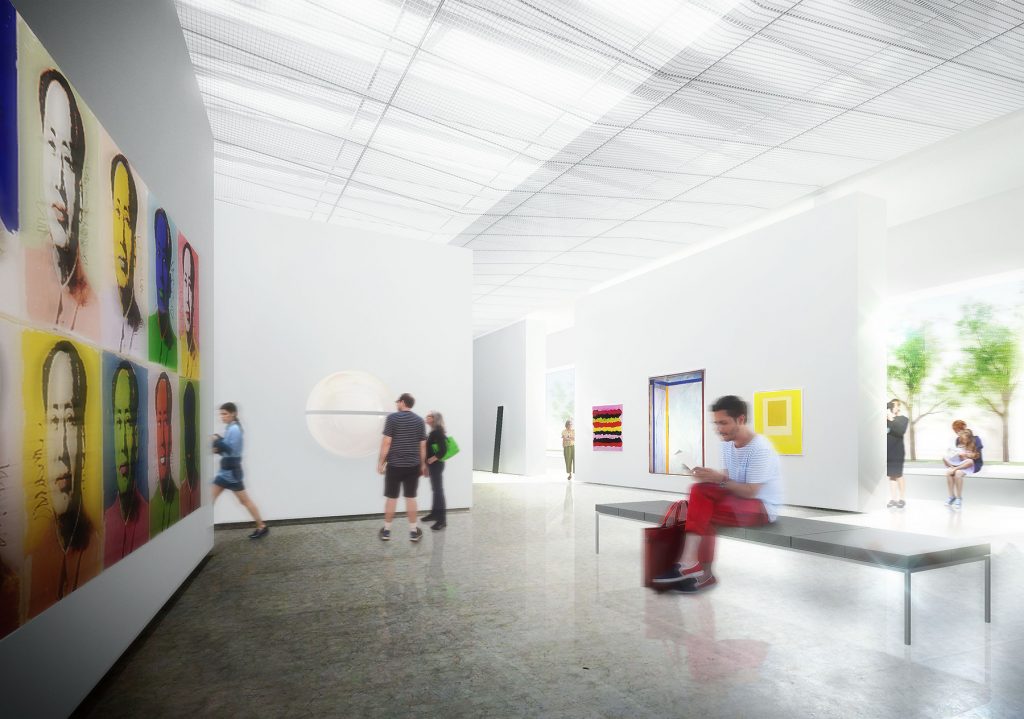
About OCMA
As the preeminent visual arts organization in Orange County, OCMA is committed to making the arts accessible to all, and offers a host of programs that engage the community with contemporary art and artists.
For the past 56 years, the Orange County Museum of Art (OCMA), along with its predecessor institution, the Newport Harbor Art Museum, has enriched the lives of a diverse and changing community, presented exhibitions of 20th and 21st century art that have traveled nationally and internationally, and built a collection of more than 3,500 works, with a focus on artists from California and, more recently, the Pacific region. The museum has an established history of actively discovering and engaging with living artists at pivotal points in their careers.
A dynamic program of exhibitions draws more than 30,000 visitors annually to OCMA, and more than 15,000 children and adults participate in the museum’s award-winning education programs.
The museum’s collection includes important examples by artists from Southern California, including John Baldessari, Chris Burden, Vija Celmins, Bruce Conner, Richard Diebenkorn, Robert Irwin, Catherine Opie, Charles Ray, and Ed Ruscha. In recent years the museum has broadened its focus to include artists of the Pacific region, transforming its biennial series into the California-Pacific Triennial, the first in the world to examine the totality of contemporary art from the Pacific region. In the last five years, OCMA has featured works by artists from 23 Pacific region countries, including Australia, Cambodia, Canada, China, Colombia, Indonesia, Japan, Mexico, New Zealand, South Korea and Vietnam, among others.
The museum was founded in 1962 as the Balboa Pavilion Gallery by 13 visionary women. With a focus on modern and contemporary art, their efforts were well received and the museum enjoyed recognition from coast to coast. By 1968 the institution became known as the Newport Harbor Art Museum, and in 1972 moved to a nearby, larger location. Interest and support continued to grow, as did its collections and exhibitions, and in 1977 the museum opened its doors in the its Newport Beach location on San Clemente Drive. In 1997, the museum was remodeled and renamed the Orange County Museum of Art. It continues to enjoy worldwide recognition for its ground-breaking exhibitions and early support of young and promising artists.
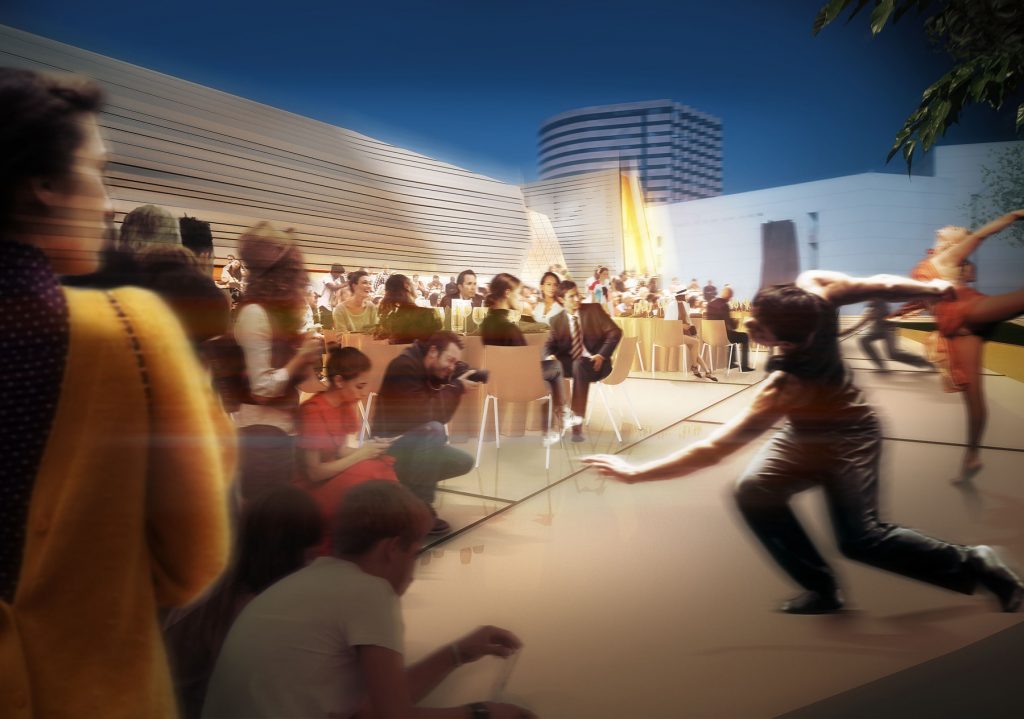
About Morphosis
Morphosis is a global architecture and design firm, creating compelling work that is intelligent, pragmatic, and powerful. For more than 40 years, Morphosis has practiced at the intersection of architecture, urbanism, and design, working across a broad range of project types and scales, including civic, academic, cultural, commercial, residential, and mixed-use; urban master plans; and original publications, objects, and art.
Committed to the practice of architecture as a collaborative enterprise, founder and Pritzker Prize-winning architect Thom Mayne works in tandem with principals Arne Emerson, Ung-Joo Scott Lee, Brandon Welling, and Eui-Sung Yi, and a team of more than 60 in Los Angeles, New York, Shanghai, and Seoul.
At the root of all Morphosis projects is a focus on rigorous research and innovation, prioritizing performance-driven design that is environmentally, socially, and economically sustainable.
Through its research arm, The Now Institute, the firm collaborates with academic institutions to create design-based solutions for the pressing issues of the day, from mobility, urban revitalization, and sustainability to public policy, planning, and community outreach.
For more information, visit morphosis.com.
